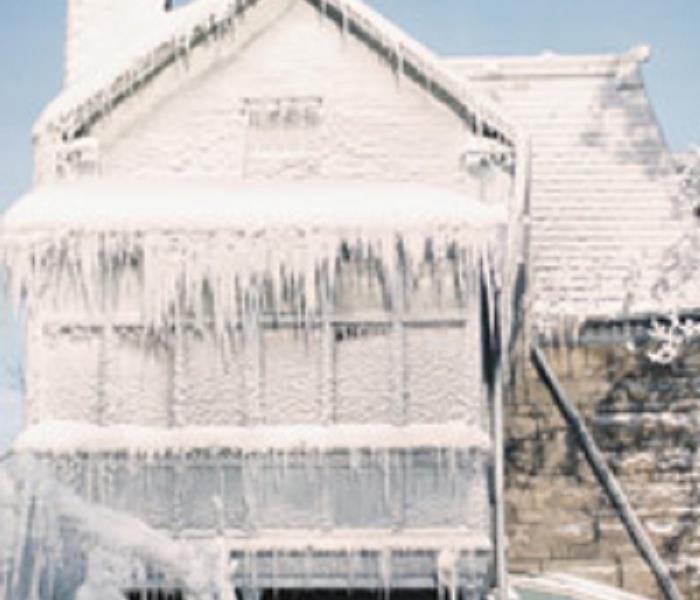7 Ways To Help Prepare Your Home For Winter
1/3/2017 (Permalink)
Winter is on its way and, for most of the country that means freezing temps, wind, snow, ice and heavy jackets.
To prepare your home and your household for the colder months ahead, review this handy checklist, which is designed to help you be more prepared for whatever old man winter has in store. Please keep personal safety in mind when checking items off this list, and connect with a trusted professional or contractor for help with anything you are unable to do yourself
1. Invest in weather stripping
Weather stripping is a good way to help seal warm air in and cold air out of your home. Available in almost any hardware store, weather stripping installs quickly around windows and doors and can help prevent air leaks.
Before winter arrives, check the following parts of your home for leaks or drafts:
- Windows
- Doors
- Vents and fans
- Plumbing areas
- Air conditioners
- Mail chutes
- Electrical and gas lines
2. Clean your gutters
Clear gutters help drain water away from your roof and your house. If they're clogged however, especially in colder months, they're more apt to freeze, causing additional blockages. Blocked gutters can allow melting ice and snow to seep into your roof, or flood your home's foundation, causing damage.
If it's safe to do so, take some time before winter hits and clear out your gutters, or work with a trusted roofing professional or contractor to have your gutters cleaned.
3. Evaluate your roof to prevent ice dams
While a roofing professional is cleaning the gutters, see if he or she can evaluate your roof for ice dams too.
In cold weather, heat escaping your home can melt and refreeze ice and snow on your roof, leading to ice dams. These block off drains, and let water and ice continually build up on your roof – and possibly under it – weakening your roof and putting your home at risk.
To help prevent ice dams:
- Insulate your attic - Your attic should have plenty of insulation to prevent too much heat transfer from your living areas to the attic. Check parts of the attic that may not be well insulated, like:
- Pipes and vents
- Chimney systems
- Light fixtures
- Ventilate your attic - If your attic wasn’t built with a ventilation system, contact a trusted professional or contractor about ventilating your attic before winter. Proper ventilation allows cold air into the attic, while the insulation seals heat in your living areas. This can help prevent warm air from melting ice on the roof, leading to possible damage.
4. Buy a roof rake to keep snow from building up
According to the Insurance Institute for Business & Home Safety (IIBHS), an average roof can handle up to four feet of fresh snow before it’s stressed. However, as snow packs down from multiple storms, could cause a roof collapse!
If you expect a lot of snow this winter, invest in a roof rake. It can help you easily clear snow off your roof and protect your home during those blizzard months.
5. Prune trees around the house
If there are long tree branches hanging near your house, your roof, or your gutters, prune them before it gets too cold. Branches broken from heavy snow and ice can cause all kinds of damage to your home. A few hours with the pruner now could save you thousands of dollars in damages later this winter.
6. Stock up on basics
You know what happens when the news calls for bad weather; stores flood with people, all buying milk, bread, batteries, flashlights, and duct tape by the truck load. How do you avoid this mess?
Stock up on basic supplies before winter, and stay cozy in your home.
Strong winds, blizzards, ice, and snow can cause blackouts and power outages, which can wreak havoc on your home in the winter. To prepare, keep supplies on hand, and read more about the types of alternate heating sources available for purchase.
7. Protect pipes from freezing
According to the IIBHS, a burst pipe can cause more than $5,000 in water damage! Thankfully, you can do something to help protect your pipes from freezing in bitter cold weather.
Don't turn the heat down too much when you’re out of the house. You may not be there to enjoy it, but your pipes need the heat to prevent freezing.
Let faucets drip during serious cold snaps to provide relief for your pipes.
Give your home a once over for any exposed or vulnerable piping, and wrap them with insulation. Hardware stores usually carry foam rubber or fiberglass sleeves for pipes, which are easy to install.
Caulk up cracks or holes in your walls to keep cold air away from pipes. This might not be practical for the average homeowner, so speak to a trusted contractor.
If your pipes do freeze, and water stops flowing from faucets, call a plumber immediately!





 24/7 Emergency Service
24/7 Emergency Service